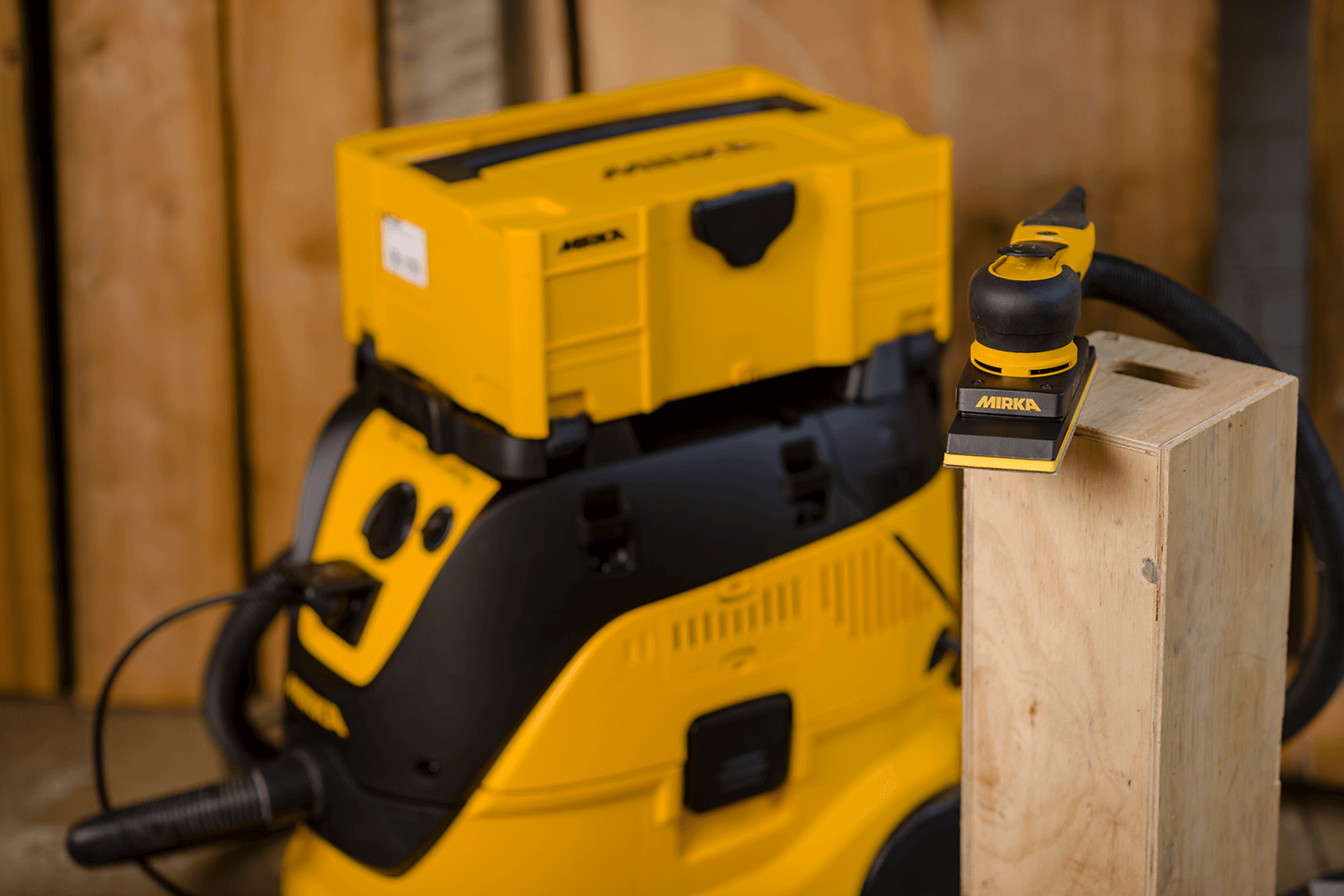Using Mirka abrasives? Good call. Want to make them last even longer? Here are 11 practical tips to help you save money, reduce waste, and get more out of every grit.
1. Pick the right abrasive for the job
Choosing the correct abrasive type and grit for the material you’re working on is crucial. Too coarse can damage the surface and waste material; too fine can clog quickly. Mirka has specialised abrasives for timber, automotive, composites and more — match it to the job for longer life and better results.
Here is a rough guide:
| Timber | Try Abranet Ace for exceptional dust-free sanding, or Ultimax Ligno for aggressive sanding with a consistent scratch pattern and reduced heat build-up. |
| Paint or lacquer removal | Abranet Ace or Galaxy offer high stock removal without clogging. |
| Automotive surfaces (primers, clear coats) | Galaxy or Iridium are ideal for cutting, while Abralon delivers smooth, controlled finishing. |
| Composites or fibreglass | Abranet Ace and Galaxy perform well for general sanding. For really hard or resin-heavy surfaces, Abranet SIC NS is ideal thanks to its silicon carbide grain. |
| Plaster | For smooth sanding with minimal dust, Abranet or Abranet Ace are top choices. For heavier stock removal, Abranet Ace HD and Galaxy work well thanks to their durable grain and fast cutting action. |
| Cement | Use Abranet SIC NS or Galaxy for effective sanding and dust extraction. For a fine, polished finish, follow up with Abralon. |

2. Clean your abrasives
Dust clogs the abrasive surface, making it ineffective. For mesh-style abrasives like Abranet Ace, a quick blast of compressed air restores performance. For traditional paper-backed discs, a light tap or pass with a vacuum removes built-up debris without damaging the grit.
3. Don’t push too hard
Excess pressure overheats the surface and wears down the abrasive fast. It can even burn or mark your material. Let the sander and abrasive do the work. A light, consistent pressure gives better control and extends abrasive life.

4. Use a dust extractor
Dust extraction isn’t just about cleaner air — it prevents clogging and heat build-up on the disc. Mirka’s Dust-Free Sanding System keeps abrasives cooler, cleaner, and working at peak performance for longer.

5. Rotate sheets or belts
When using sanding sheets or belts, don’t just wear out one area. Rotate or reposition them regularly so you’re using the full abrasive surface evenly. This prevents early wear in one spot and gets you more use from each piece.

6. Keep it cool and dry
Humidity and heat can break down adhesives or warp abrasives — especially paper-backed discs. Store them flat, in a sealed container or dry area, away from direct sunlight. This helps maintain shape, grip, and cutting power.
To keep your abrasives in top condition, consider using the Mirka Abrasive Storage Case — designed to protect discs from moisture, dust, and damage, ensuring they stay ready to perform whenever you need them. The Deep Storage Case is suitable for housing abrasives when using the Case Inlay for 150mm Discs.

7. Store mesh flat
Mesh abrasives are more flexible than traditional paper discs, but they’re also prone to curling if not stored properly. Always keep them flat to avoid warping, which can lead to uneven sanding and poor contact with the work surface.

8. Stick to recommended speeds
Too fast and you risk overheating; too slow and you’re wasting time. Follow the speed recommendations on your tool and abrasive. Keep the sander moving — staying in one spot too long can wear through the abrasive and damage the surface.
Generally, a speed between 6,000 and 8,000 rpm is ideal for sanding. Running your sander too fast causes abrasives to wear out quicker and reduces their ability to cut effectively. Higher speeds are usually reserved for polishing.

9. Use an interface pad on contours
When sanding curves or delicate edges, an Interface Pad acts like a cushion between your disc and the tool. It evens out pressure, helps the disc last longer, and prevents deep grooves or pressure marks.
10. Work through the grits gradually
Don’t skip from coarse to fine too quickly. Each grit removes the scratches left by the previous one. Jumping ahead forces finer abrasives to work harder than they’re designed for, causing premature wear and a lower-quality finish.
For ultra-smooth jobs, Mirka’s Galaxy and Abralon ranges offer really fine grits that deliver exceptional finishing results when used as part of proper grit progression.

11. Sort and reuse wisely
If you’re reusing abrasives, keep them organised by grit and usage level. That way, you don’t accidentally use a worn-out disc for detail work where precision matters. A simple sorting system saves time, money, and effort.
The bottom line
Mirka abrasives are engineered for top performance and long-lasting use — but how you handle them matters. By making a few smart adjustments to how you choose, use, and store your abrasives, you’ll get better results, reduce waste, and save money in the long run.
It’s not just about preserving your abrasives — it’s about working smarter, cutting down on unnecessary costs, and getting the best finish every time. Small habits. Big difference.






